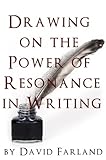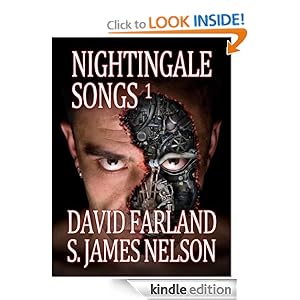Seeing Red
The True Story of Blood
Tanya Lloyd Kyi
Annick Press
As this book is difficult to summarize, I’ll put the primary information up front and follow with details. Seeing Red is about all things blood, from superstitions to science, from rites to transfusions. The material is fascinating but loosely related. Tying all of this disparate material together is a cartoon character, Harker, whom we follow as he learns about blood, runs into vampires. He has to decide if he wants to join them; meanwhile, the police are hot on their trail after a vampire attacks a man.
Harker makes notes at the end of each chapter--a clever way of reinforcing, reviewing, applying and thinking more deeply about what readers learned. The author laudably expends much effort on trying to introduce readers to customs through history and around the world, providing a great deal of scope. Occasional if inadvertent and indirect opining might make some religions or cultures uncomfortable, but the treatments are so minor, cursory, and broad in scope that most won’t notice. This is recommended for young people with a fascination for the weird and grotesque, young goths in training. Readers will have a better picture of where we came up some of our ideas about blood. Even I, who thought he something about blood, was surprised by how his knowledge transformed.
Seeing Red opens with a historical perspective, illustrating some of the stranger notions humans have had. For instance, while Galen of Turkey noted blood circulated through the body, he assumed it carried aspects of the person’s personality. Even into the Middle Ages, medical ideas of the Egyptians and Greeks persisted, leading to blood-letting. Not until the 1800s with microscopic examination of pus did humans begin to see blood differently.
Next, we see how blood played an integral part in ancient and current religions. The Mayans who used royal blood for harvests and the Aztecs were famously brutal in their open-heart surgeries. Of course, brutality knew no bounds as we venture to France where the marrow houses the soul and heads of your enemies make nice knick-knacks for your home. But blood plays a role in today’s religions as well: in India, in the Catholic church communion, in Santeria and in a Shiite Muslim ritual celebrating a doomed battle.
From there we proceed to rites of passage where in Papua New Guinea young men go through rites to rid themselves of their mother’s blood. Elsewhere: whipping matches in West Africa and tattoos in Polynesia, lion baiting in Africa, and literally pinning wings to your chest in the US military.
When girls, on the other hand, have periods, in some countries they are treated like goddesses or in others as dirty and disobedient to God. The isolation can either be seen as punishment or a break from daily duties. Menstrual blood has been seen as protective, healing and poisonous.
People around the world--from England to China to the Arctic--eat blood. The book points out we eat meat with blood, so why do we balk at eating blood? While some religions ban its consumption, many insects and animals do. We also have an unstated psychological law of contagion where we believe something is blessed or diseased, depending on whether it touched something we admire or fear. And of course, vampires continue to interest modern readers as much as the Victorians.
The first transfusion took place in 1664, to calm a man, thinking as Galen did that blood carried personality. The man survived but subsequent attempts failed. Not until the 1900s did transfusions occur scientifically, but even today we hide donor identities to prevent people from feeling connections because of the blood.
Royal blood, or genetics, is discussed to introduce indirectly concepts of recessive genes, which can plague (so to speak) a family with genetic diseases as royal families intermarried to keep their royal blood “pure.” This allows a simple discussion of porphyria and hemophilia. Genetic deficiencies may have affected governments and upheavals from Russia to England.
Blood was also used rites to become blood brothers, to join gangs, and to earn blessings. The idea of blood was also used by Hitler and friends to make a pure Aryan race. Still their process involved superstition as when a Jewish doctor donated his own blood to a German, he was punished (the blood source, and not the type, being held importance).
Blood has been used to tell the parents of switched babies, identify murderers and innocent, decide how the murder occurred, among other forensic evidence. One can even tell if they’re related to Ghengis Khan.
Does violence in video games cause violence? Romans of the empire days worried the same. Warnings actually encourage viewing. Fainting at the sight of blood might have occurred because it protected people from enemies who thought them dead.
The book concludes with sources for further reading. Recommended. The target audience is probably older elementary to high school.















